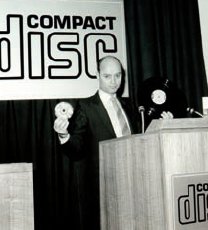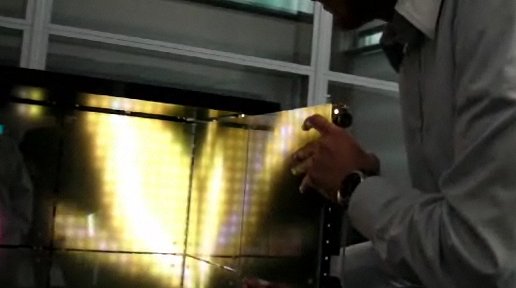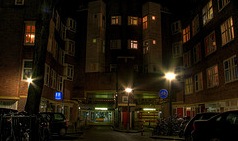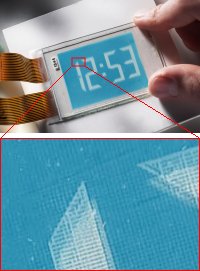 Photo: Joop Sinjou reveals a new form of storing audio to the world in 1979, three years before the cd would go into mass production. Source: Philips.
Photo: Joop Sinjou reveals a new form of storing audio to the world in 1979, three years before the cd would go into mass production. Source: Philips.On August 17, 1982, Dutch electronics giant Philips manufactured the first commercially available compact disc, a copy of The Visitors by ABBA, reports company glossy Password. An interesting choice because it would prove to be the last album of the dying Swedish megaband. By November that year Phiilips own record company Polygram would be selling from a catalog of 150 discs, mainly classical music.
I seem to remember that the CD never really caught on in the Netherlands until the late 1980s, when suddenly everybody wanted a player. According to collage band Negativland, the same revolution happened at the same time in the US, and wasn’t an accident:
[…] a flexible return policy had always existed between record stores and the seven major distributors, i.e. stores could “buy” something from a distributor, and if it didn’t sell, they could return it. This allowed stores to take more chances on new releases or on things they were not so familiar with, because if it didn’t sell, they could always send it back. Well, in the spring of 1989 all seven major label distributors announced that they would no longer accept “returns” on vinyl and they also began deleting much of the vinyl versions of their back catalog. These actions literally forced record stores to stop carrying vinyl. They could not afford the financial risk of carrying those releases that were on vinyl because if they didn’t sell they would be stuck with them. Very quickly almost all record stores had to convert to CDs. The net effect of this was that the consumer no longer had a choice because the choice had been made for us. High priced compact discs were being shoved down our throats, whether we knew it or liked it or not.
I don’t know if this policy was enforced world wide, but I do know that the price difference between the CD and the LP in the Netherlands—40 versus 25 guilders—never went away, even though the production costs of CDs would soon be lower than the original production costs of LPs.
Where were you when the digital audio revolution took place?




 Philips spin-off
Philips spin-off  If the idea of a
If the idea of a ![[Top-to-bottom visualisation of a hotel room]](https://www.24oranges.nl/wp-content/uploads/2007/10/hotelroom_citizenm.jpg)
